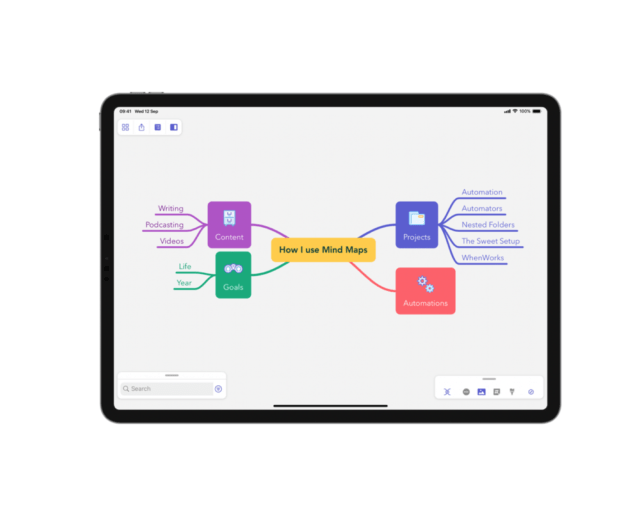Key To Visualizing Your Ideas – Concept Maps
Contents
Concept maps are a type of a framework that is used for visualizing relationships between cross-functional ideas. Through the use of nodes, boxes, lines, and linking phrases ideas are connected to show the corresponding relationship between them. Typically, a concept map maker is used to structure your thoughts and ideas and organize them into a meaningful whole.
The hierarchical structure of a concept map is mostly preferred as it organizes large themes at the top and small and specific details below it. Then it helps in defining the process or workflow, so if you have a big project, it will be easy to branch out ideas that fall between the tasks. So instead of going from task A to E, you can use a concept map to draw out tasks B, C, and D. it is a useful tool for visualizing and graphical representation of your ideas that can be also be presented to others in a simplified, creative way.
5 Phases In Constructing A Concept Map
- Brainstorming: write down whatever comes to your memory, be it facts, ideas, or terms that are related to the main topic then make a list and try to keep it short like a word or a short phrase. This is known as the brainstorming phase, you’re to list important concepts on sticky notes before it flashes out of your mind. Don’t worry about the relationships between concepts or their redundancy. Your job here is to generate the largest list possible.
- Organizing: now spread those sticky notes on a flat surface so that it can be easily read. Create a group or subgroups of the related items probably in a form of hierarchy and discard the terms or ideas that can’t be included under specified categories.
- Layout: take a large piece of paper and come up with a layout as per your choice that can best represent your collection of ideas and their relationship with each other. You can be as creative in this phase as you like because there are no formal rules when it comes to making concept maps however make sure that your creativity stimulates interest and not distract the reader.
- Linking: uses lines, arrows, and linking phrases to connect your thoughts/ideas but don’t use too many as it will clutter your diagram and make it difficult to be read.
- Finalizing: use colors, fonts, shapes, borders to enhance your concept map and make it stand out. You can also give your concept map a title that catches the attention of the reader. After finalizing everything, check for accuracy. Are the concepts and their relationships logical? Is the map orderly and neat or messy?
Mind Map Vs Concept Map – What’s The Difference?
People often struggle to understand the difference between concept maps and mind maps since they seem so similar yet the two maps differ from each other as they are designed with different structures and serve a different purpose.
Concept mapping was introduced in the 1970s by American Professor and Researcher Joseph D. Novak, particularly to be used for learning and teaching. On the other hand, the term mind mapping was coined by British Psychology Author Tony Buzan in 1974, and it was used for mapping information.
Concept maps are designed to connect multiple ideas through branches radiating from the main idea rather than free-flow brainstorming around a single idea as is seen in traditional mind maps. A general mind map is helpful when generating ideas before organizing them into a concept map. However, unlike mind mapping, the structure of a concept map shows the meaning, logical connections, and relationships.


